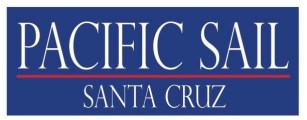Winter Ocean Swell

There are times when the harbor entrance can have plenty of depth from the continual winter dredging, though we still can get fairly large swells at the harbor entrance.
First, there’s a live web cam showing the harbor entrance, 3 weather prediction sites, tides, and swell height prediction. Please do your homework before coming over to Santa Cruz to charter a boat. If it says that the swell will be exceedingly large at low tide around 4:00p.m. when you’d be returning from a charter, we most likely won’t let you charter that day. Check with the office staff or the Harbor Master’s Office for an update or, take a nice walk out to the end of the West jetty and see for yourself. We wouldn’t allow you to go sailing if it looks at all dangerous.
While making your way out of the harbor, raise the mainsail (we always recommend having your main up exiting and returning to the harbor to increase boat speed and control and as a precaution should your engine ever fail), stay as far to the right as possible, observe the entrance and, if a swell is running, try to time your exit between sets of waves (waves come in sets, usually 5-8 at a time, with periods between sets). Should you arrive at the entrance during a set, slowly motor in circles within the channel until there is a lull between sets, and then exit (be sure to sheet your main in to prevent an accidental jibe as you’re circling).
When you’ve decided the time is right, throttle up, trim the mainsail, and set a course for 30 to 40 degrees to the face of the swells. “Quartering” the swells will prevent the boat from pitching up and down off the back of the wave (“hobby horsing”), reducing the possibility of lifting the propeller out of the water, and will keep the boat speed up-all important when making your way over swells. Remember to have all crew SIT DOWN and HOLD ON! Once you’re well clear of the swell line (sometimes 100 to 200 yards off the entrance), throttle back, raise or unfurl the jib, shut down the “iron genny” and GO SAILING!
When returning to the harbor, start the engine at least 1/2 mile out. If the engine won’t start, now’s the time to find out, not when you’re in the middle of the entrance with breaking waves on your stern. You’ll have the opportunity to tack or jibe around, away from the harbor entrance and stand off until Vessel Assist or the Harbor Patrol can give you a tow in.
When beginning your approach, assign one crew the responsibility of looking astern for swells. The crew and helmsperson should be in virtually constant communication regarding the height and frequency of the swells not only astern but at the harbor entrance as well. As in your departure from the harbor, you’re goal here is to enter the harbor BETWEEN sets of swells or, at the least on the back of one of the smaller swells of the set. Timing is fairly critical here. Displacement sailboats DO NOT like to surf down the face of a breaking wave. The rudder loses its “grip” on the water and the boat broaches (turns beam to the waves) and everybody gets wet-Not a fun way to end your pleasant day sailing. Just as in exiting, you can circle 100 yards or so outside the harbor entrance, timing the swells and wait for a break before beginning your entrance. Remember; don’t be in a hurry to get back into the harbor. Patience is a virtue in this situation. You’ll be safe standing off. Once you’ve decided to go for it, try to match your boat speed to that of the swells and enter behind the breaking wave.
Please stay away from the coast while sailing, especially the points (surf points). Although, the swell may seem small out on the Monterey Bay, close to shore they can build up and break out in locations that they didn’t during the summer.
